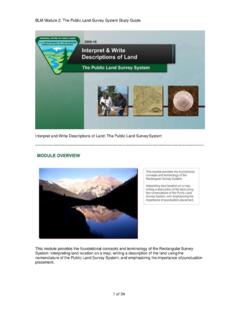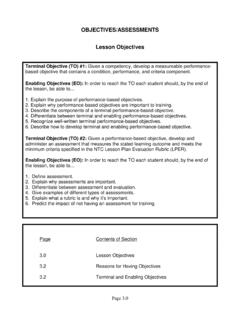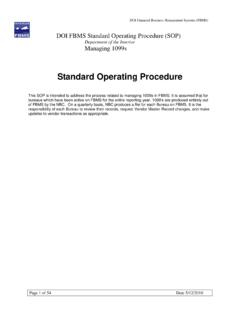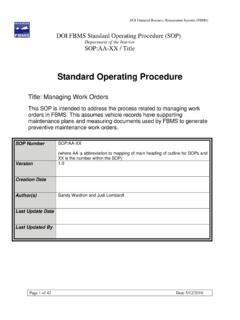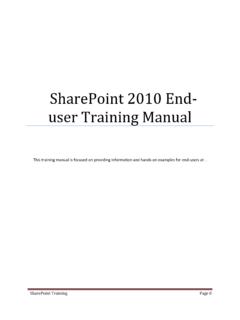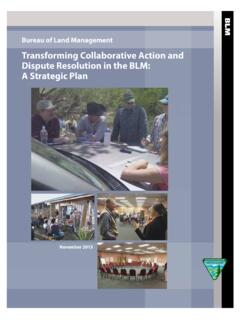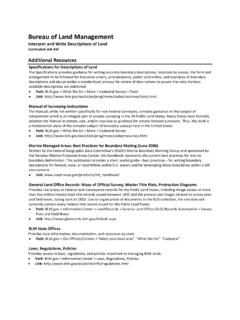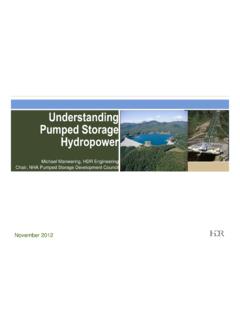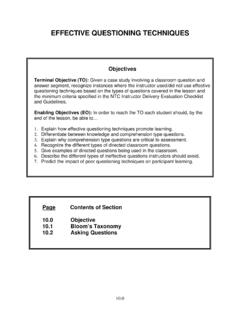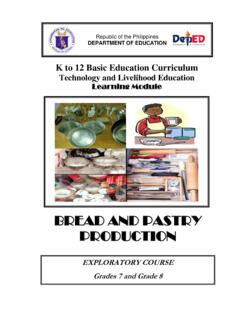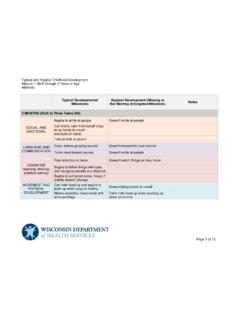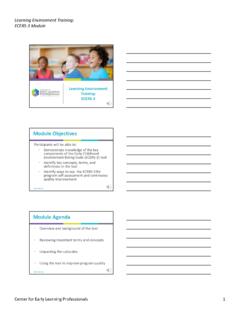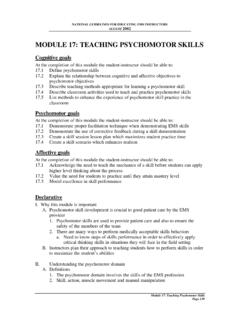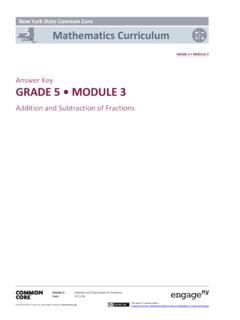Transcription of BLM Module 3: Metes-and-Bounds Study Guide
1 BLM Module 3: Metes-and-Bounds Study Guide Interpret and Write Descriptions of Land. Metes-and-Bounds ---------------------------------------- ---------------------------------------- ---------------------------------------- ----- ---- This Module introduces the learner to the elements and proper construction of Metes-and-Bounds descriptions of land, an overview of the different types of natural and artificial boundaries that can be used in Metes-and-Bounds descriptions, and an overview of the associated primary writing parts.
2 , 1 of 22. BLM Module 3: Metes-and-Bounds Study Guide The objectives of this Module are to help you: define the types of monuments and measurements used in Metes-and-Bounds descriptions, compare and contrast natural vs. artificial boundaries, and identify the primary writing parts of descriptions of land for Metes-and-Bounds types. ---------------------------------------- ---------------------------------------- ---------------------------------------- ----- ---- Lesson 1: Metes-and-Bounds , 2 of 22. BLM Module 3: Metes-and-Bounds Study Guide After completing this lesson, you should be able to: identify special survey types, identify elements in a Metes-and-Bounds survey, comprehend the basics of reading and writing bearings, and comprehend the basics of reading and writing a statement of quantity.
3 ---------------------------------------- ---------------------------------------- ---------------------------------------- --------- Land surveys of the Metes-and-Bounds type were incorporated in the PLS as special surveys and are commonly used to buy and sell land in the private sector. The description of land parcels in the private sector by this method should be prepared from surveyed information (map, plat, or notes of the survey) or record information that has been verified, is locatable on the ground, and can be written without ambiguity.
4 , 3 of 22. BLM Module 3: Metes-and-Bounds Study Guide Special surveys of nonrectangular parcels, including reservations, mineral surveys, forest homestead entries, small holding claims, surveys, donation land claims, and congressionally designated areas were created by a unique need to depart from the rectangular system. ---------------------------------------- ---------------------------------------- ---------------------------------------- --------- For Federal land, almost all special survey descriptions will be a description by reference to an official government survey.
5 In this example, the Homestead Entry Survey Number 345 is No. 345. The exact formatting for inclusion in official documents will be discussed in Module 4. , 4 of 22. BLM Module 3: Metes-and-Bounds Study Guide Other Metes-and-Bounds land descriptions published in the Federal Register either should be copied from official records, written by a land surveyor, or referred to a land surveyor for review of the accuracy and sufficiency of the description. For additional information, refer to Chapter III of the Specifications.
6 ---------------------------------------- ---------------------------------------- ---------------------------------------- --------- Let us first cover the elements that create a Metes-and-Bounds land description. The metes-and- bounds survey generally includes the use of physical monuments. The monument may be a natural object, such as a river, lake, rock ledge or ridge; or man-made, such as a wall, ditch, or road, which defines and delimits the location of a boundary line. Man-made, or artificial monuments, like marked stones, posts or pipes with marked caps set by the surveyor are most often used to identify the terminus point (beginning or ending point) of a surveyed line.
7 , 5 of 22. BLM Module 3: Metes-and-Bounds Study Guide The Metes-and-Bounds survey may also reference previously surveyed or described boundary lines. An example of this in a description of land would be along the west boundary of the Jones parcel , or as shown here with the line common to the land of Mrs. Mary Olbum.. ---------------------------------------- ---------------------------------------- ---------------------------------------- --------- Typically, the survey will show or list out the directions and distances measured along the boundary lines.
8 The surveyor then uses these measurements to calculate the area within the surveyed parcel of land. Take a few moments to review the description. When completed, select the Forward button to continue and we will discuss how to interpret and read bearings. , 6 of 22. BLM Module 3: Metes-and-Bounds Study Guide Bearings are an expression of direction by dividing the Earth's sphere into quadrants and expressed in terms of NE, SE, SW, and NW by angles measured from True North or South. Bearings in descriptions of land are formatted almost like how you would say it in a sentence From North, this line goes 57 degrees towards the East, and is written as: "North-space-57- space-degrees-space-East" or in abbreviated format: N-period-space-57-degree symbol-space- E-period.
9 Here are a few more examples: S. 20 E., S. 40 W., and N. 30 W. Distances can be presented in various units of measure, but typically are shown in feet or chains in federal land descriptions. ---------------------------------------- ---------------------------------------- ---------------------------------------- ----- ---- A statement of quantity of the delimited land, or area, usually follows the boundary line measurements. In most cases, area is expressed in acres. Where justified by the accuracy of the survey measurements, the value may be carried to the nearest hundredth of an acre or be expressed by square footage.
10 , 7 of 22. BLM Module 3: Metes-and-Bounds Study Guide Approximate areas should be indicated as such and given to the nearest full acre, as shown here in parentheses with in protraction blocks. Whole sections are considered to contain 640 acres. ---------------------------------------- ---------------------------------------- ---------------------------------------- --------- Lesson 2: Natural and Artificial Boundaries , 8 of 22. BLM Module 3: Metes-and-Bounds Study Guide After completing this lesson, you should be able to; compare and contrast natural vs.
